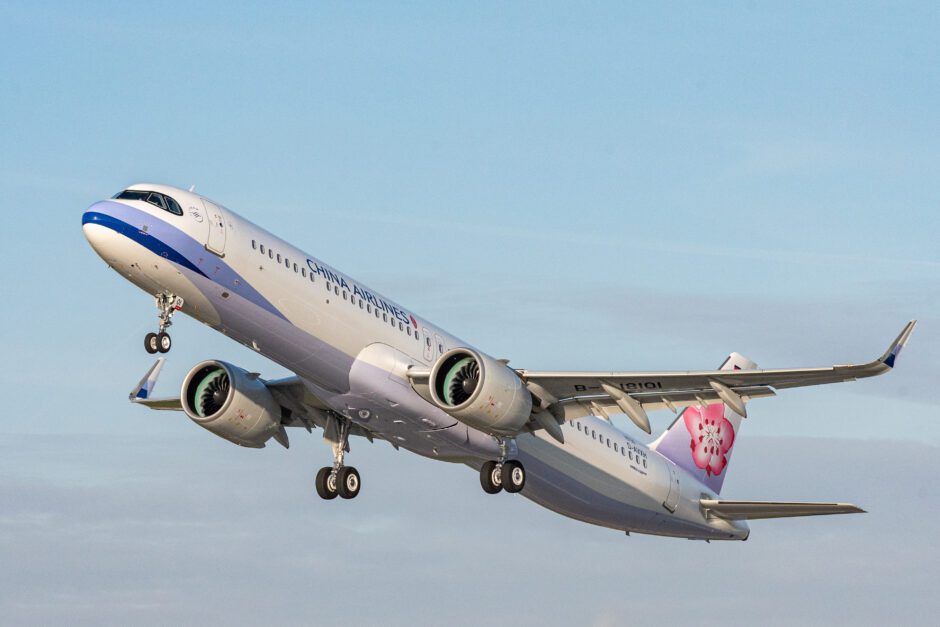
A350 900 Japan Airlines Take Off scaled
Preliminary traffic data for October 2024 indicates robust growth in the Asia Pacific aviation sector, primarily driven by strong leisure and corporate travel demand alongside a surge in air cargo demand.
Passenger traffic approached pre-pandemic levels, supported by healthy long-haul traffic, while cargo volumes benefited from inventory restocking and heightened e-commerce activity ahead of the holiday season.

Passenger Traffic Nearing Pre-Pandemic Levels
October 2024 saw Asia Pacific Airlines handle 31 million international passengers, marking a 19% year-on-year growth. Notably, passenger traffic reached 98.6% of October 2019 levels, highlighting that the region is nearly back to pre-pandemic levels.
Revenue Passenger Kilometres (RPK) grew 19.7% year-on-year, surpassing the 18.6% expansion in available seat capacity (ASK). Moreover, the passenger load factor also increased by 0.8%, reaching 81.2%, signaling growing demand, particularly in long-haul travel.
Over the first ten months of 2024, international passenger volumes climbed 32.8% year-on-year, reflecting a steady recovery driven by:
- Corporate and Leisure Travel Demand: Improved global economic conditions have revitalized both sectors.
- Capacity Constraints: Persistent supply chain disruptions and aircraft delivery delays kept seat supply slightly tight, benefiting load factors.

Cargo Traffic: Riding the Wave of E-Commerce and Trade Flows
The cargo segment also performed well with freight tonne kilometers (FTK) rising by 10.9% in October. This growth was particularly driven by:
- Inventory Restocking: Businesses prepared for year-end sales and holiday demand.
- Disruptions to Maritime Shipping: Ongoing security risks in the Red Sea diverted some trade lanes to air freight.
Offered freight capacity (FATK) increased by 10.6%, showing the continued recovery of belly-hold capacity as passenger flights resumed. However, the average freight load factor improved only marginally by 0.2 percentage points to 61.6%, suggesting capacity growth matched demand.
From January to October 2024, cargo volumes rose 14% year-on-year, signaling sustained growth in trade flows despite uncertainties in advanced economies.

Asia Pacific Market Challenges and Opportunities
While the recovery in Asia Pacific aviation is notable, challenges persist:
- Supply Chain Bottlenecks: Delayed aircraft deliveries are constraining carriers’ ability to scale operations.
- Economic Uncertainty: Advanced economies face potential slowdowns, which could dampen long-term demand.
- Geopolitical Risks: Disruptions to key maritime trade routes are an ongoing concern.
However, opportunities abound:
- The growing e-commerce sector and robust consumer demand promise continued momentum in air cargo markets.
- Increasing appetite for both leisure and corporate travel provides a strong foundation for passenger growth.

Outlook: Positive, With Caution
The AAPA expects the upward trend in passenger and cargo demand to continue through the remainder of 2024. In the words of AAPA Director General Subhas Menon: “Asian airlines remain well-positioned to adapt to evolving global conditions, and to navigate these challenges effectively.”
Mr. Menon further highlighted that the sector’s steady recovery, nearing pre-pandemic levels, underscores its resilience amid global uncertainties. However, Asia Pacific Airlines must now focus on mitigating operational bottlenecks while leveraging strong market demand to sustain its growth trajectory.
Views: 160



